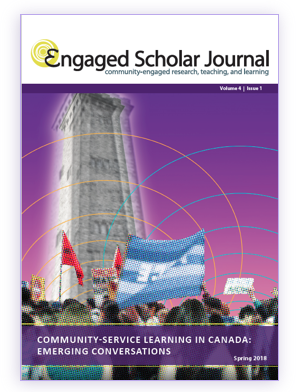Production of the Global Health Doctor: Discourses on International Medical Electives
DOI:
https://doi.org/10.15402/esj.v4i1.315Keywords:
international service-learning, international medical electives, global health, discourse, medical educationAbstract
This article attempts to interrupt dominant narratives in the literature about international service-learning (ISL) in the field of medicine by critically deconstructing discourse related to a common model used to teach global health in undergraduate medical education: the international medical elective (IME). Based on a study conducted in 2012, the results have not been previously published. Using a Foucauldian discourse analysis, the study interrogated the underlying assumptions behind the nature of “service” being rendered by conveying the imagery, language, and consequences of the dominant discourses used in journal articles indexed on MEDLINE between 2000 and 2011. The analysis revealed an IMEs literature steeped in problematic discursive (re)productions of colonial constructs and imagined geographies, primarily through two dominant discourses designated as “disease and brokenness” and “romanticizing poverty.” These discourses both justify and reinforce privileged subject positions for students engaged in these ISL experiences, while inadequately considering structures and systems that perpetuate marginalization and health inequities. Such discourses often marginalize or essentialize people of so-called “host” countries, while silencing subaltern perspectives, resistance struggles, knowledges, and epistemologies. Challenging current ISL practices in medicine requires educators to actively work towards decolonialization, in part by recognizing the ability of discourses to produce meaning and subjects.
Downloads
Published
How to Cite
Issue
Section
License
Authors who publish with this journal agree to the following terms:
- Authors retain copyright and grant the journal right of first publication with the work simultaneously licensed under a Creative Commons Attribution License CC BY 4.0 that allows others to share the work with an acknowledgement of the work's authorship and initial publication in this journal.
- Authors are able to enter separate, additional contractual agreements for the non-exclusive distribution of the journal's published version of the work (e.g., post it to an institutional repository or publish it in a book), with an acknowledgement of its initial publication in this journal.
- Authors are permitted to post their work online (e.g., in an institutional repository or on their website) after the publication of their work in the Engaged Scholar Journal.
- Please note that while every opportunity will be taken to ensure author participation in the editing process, due to time constraints final copyediting changes may be made before publication to ensure APA adherence throughout all submissions.




